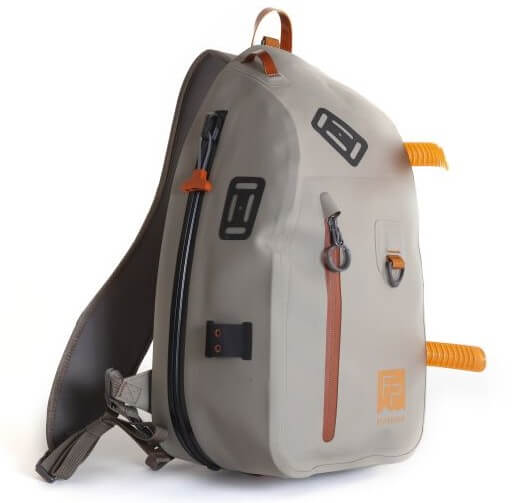Patagonia Fly Fishing Gear Guide
by John Duncan, Telluride Angler
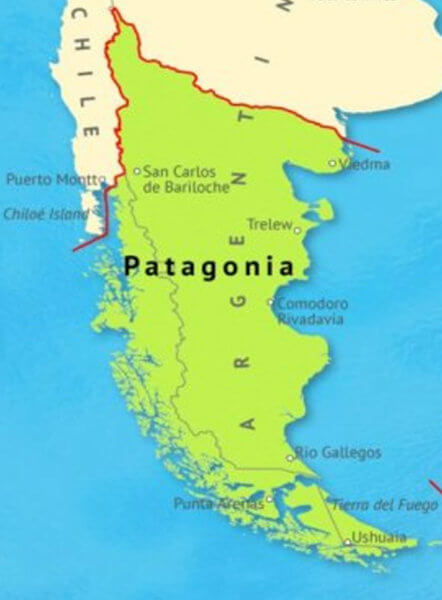 The very name of this legendary fly fishing destination evokes a place beyond the horizon, a wilderness of landscape and culture. Patagonia possesses rivers, fish and steaks of mythical quality, but trout fishing throughout the region has much in common with that of the Rocky Mountains. The purpose of this article is to scope equipment requirements for the primary trout fishing destinations in Argentina and Chile, ranging from the Malleo and Chimehuin in the north to El Chalten in the south, or from Pucón to Puerto Natales on the Chile side. If you are fishing with Traful River Outfitters, Patagonia River Guides, Patagonia Base Camp, Martín Pescador or another prominent trout fishing guide service, this is your article. This article does not cover fishing Tierra del Fuego for sea run browns and steelhead, nor salmon fishing in the Chilean fjords. Anadromous fish are sometimes available from Chilean trout lodges, however, so my recommendations will be peppered with gear for those opportunities.
The very name of this legendary fly fishing destination evokes a place beyond the horizon, a wilderness of landscape and culture. Patagonia possesses rivers, fish and steaks of mythical quality, but trout fishing throughout the region has much in common with that of the Rocky Mountains. The purpose of this article is to scope equipment requirements for the primary trout fishing destinations in Argentina and Chile, ranging from the Malleo and Chimehuin in the north to El Chalten in the south, or from Pucón to Puerto Natales on the Chile side. If you are fishing with Traful River Outfitters, Patagonia River Guides, Patagonia Base Camp, Martín Pescador or another prominent trout fishing guide service, this is your article. This article does not cover fishing Tierra del Fuego for sea run browns and steelhead, nor salmon fishing in the Chilean fjords. Anadromous fish are sometimes available from Chilean trout lodges, however, so my recommendations will be peppered with gear for those opportunities.
Most anglers who visit Patagonia will do a combination of wading and float fishing. In addition to larger rivers with household names such as the Chimehuin, Limay, Rivadavia and Futaleufú, every district offers small water fishing on spring creeks and freestones in addition to high quality stillwater fishing. The latitudes of these southern hemisphere fisheries mirror those of the Rocky Mountains. For example, Telluride is 38 degrees north latitude while San Martín de los Andes is approximately 40 degrees south latitude. Most of the fishing is in the Andes, which in turn is near the Pacific Ocean. As a consequence, the environment has coastal characteristics, even on the Argentine side of the mountains. Air temperatures are moderate. Thunderstorms are rare but rain is common. Equipment and apparel suitable for fishing in Patagonia comprises a combination of that used in the Rocky Mountains and Pacific Northwest.

[Read John’s Personal Packing List]
Water types and fly rods
Your guide service will probably provide a recommended equipment list that generalizes potential equipment needs regardless of seasonality. If you pry a little deeper, you’ll be able to trim down your packing list substantially. For example, most Patagonia trout destinations offer stillwater fishing, but it is uncommon to fish the lakes outside of January and early February when dragonflies hatch. There are some obvious exceptions, like Jurassic Lake, but at most destinations your lake gear will remain unfished outside of the dragonfly window.
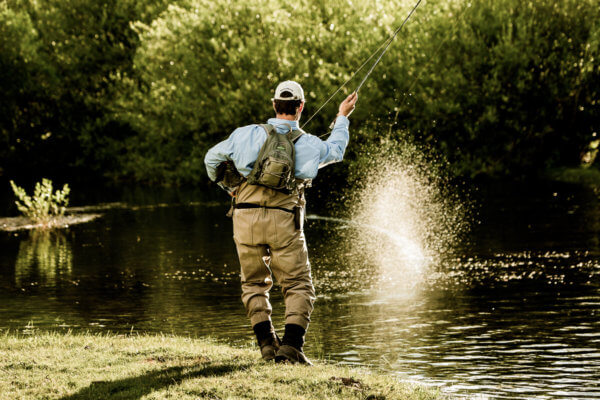
Spring creeks: Numerous throughout Patagonia, spring creeks provide close quarters sight fishing for potentially huge fish. In the U.S., the highly pressured spring creeks of the Northern Rockies demand our most technical presentations. We fish them with 3 and 4-weights, long leaders and carefully chosen flies. In Patagonia, so much of the surface water is filtered through soil that the term “spring creek” takes on a more broad definition. Many Patagonian spring creeks resemble small stillwaters, deep trenches of air-clear water that moves imperceptibly. Others recall the spring creeks of the Northern Rockies. The critical question is this: do the spring creeks receive a lot of pressure? If so, you’ll be fishing long leaders and small flies. If not, you’ll probably fish terrestrials and streamers.
From my experience, a 9′ rod is always useful on the spring creeks of Patagonia. In many cases, high grasses and small trees surround these ribbons of water, necessitating a high back cast. Fast action 9′ rods hold your line up higher than medium action 8′ or 8 1/2′ rods.
If you’re fishing DIY, you may fish public land creeks that get more pressure. In this case, you’ll want a fast action 9′ 4-weight and long, light leaders. If fishing with a lodge and guide service, you’ll probably be on spring creeks that receive very little pressure. In this case, you’ll want a fast action 9′ 5-weight or even a 6-weight. To my surprise, many of my spring creek opportunities have turned into streamer fishing sessions with size #4-6 flies, definitely 6-weight territory.
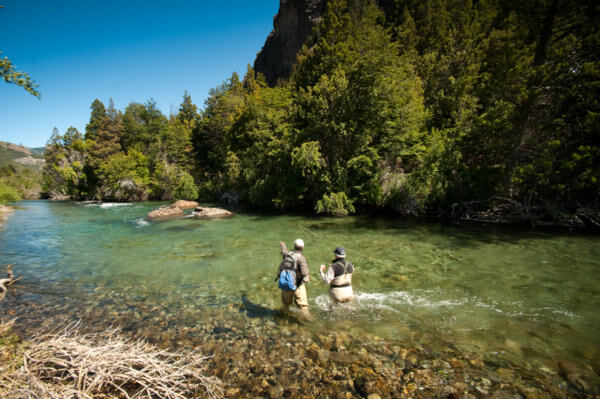
Small freestone rivers: One of the true pleasures of fishing Patagonia is the plethora of unadvertised tributaries that provide a wealth of old-fashioned wading opportunities, usually with a dry fly. These are often headwaters streams, accessed by driving upstream from your lodge rather than downstream to a boat ramp. Smaller and more sheltered, this is where you’ll use a medium action dry fly rod. I always take my Scott GS 844-4 and GS 885-4 to Patagonia. A fast action #5 or #6 is usually my most-fished stick, but one of these dry fly rods finishes a close second. Any wade fishing opportunity lends itself to a medium action rod on all but the windiest days.
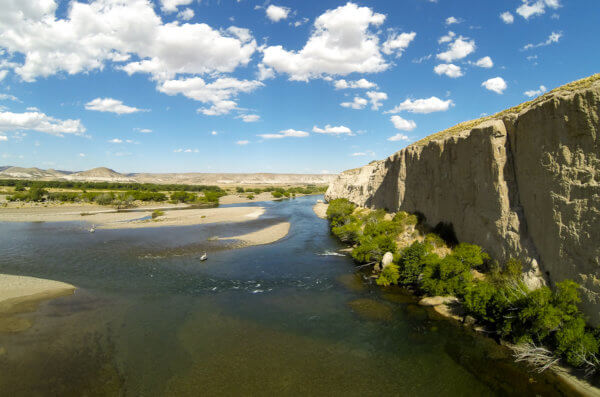
Large rivers: Bring a medium-action dry fly rod only if you have your fast-action 5 and 6-weight categories covered. Under calm conditions, you can still cast a 6-weight with a dry fly. Under windy conditions, however, it’s hard to make a soft 4-weight work on big water from a moving drift boat. So, I strongly recommend a fast action 9′ 5-weight for every angler that visits Patagonia. For some reason, it has become popular for lodges recommend the tandem of a fast action 4-weight and fast action 6-weight. I agree with this recommendation, but only if you also have a fast action 5-weight. You’ll be casting all day long and it’s much more pleasant to swing a #5 rather than a #6.
On most days of float fishing, I rig two dry fly rods and one streamer rod. I’ll fish a Scott GS 885-4 until the wind shuts me down, then reach for the fast action 5-weight. My 6-weight will be rigged with a 15-foot type III or IV sink tip for streamers. Throughout the year but particularly in the spring and fall, large migratory trout may be caught by prospecting deeper runs with this setup. It’s really fun to fish a long run with a dry fly, then come back through with a streamer. You just never know what will happen.
Chilean coastal rivers: Many of these contain anadromous brown trout and salmon in addition to smaller resident fish. If fishing in Chile, make sure to ask this question. If sea run fish may be present, bring an 8-weight. If there are lots of sea run fish, consider bringing your full steelhead kit, including a 10′ single handed rod, switch rod or Spey outfit. Whether this opportunity is major or peripheral, I would always pack an 8-weight of some kind to Chile. Some of those coastal rivers are so large that 8-weights are right at home for regular trout fishing with a streamer.
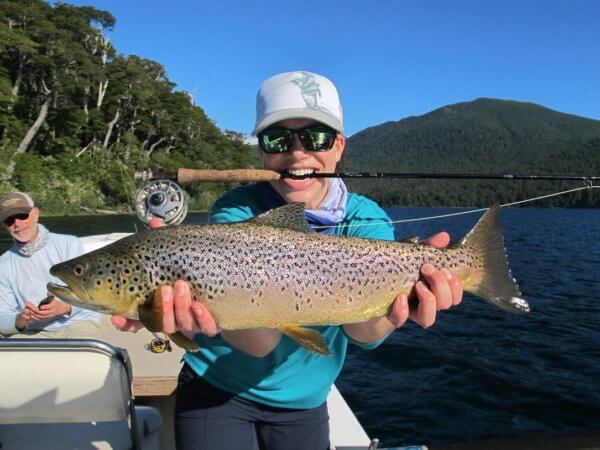
Stillwaters: In late December, January and early February, dragonfly fishing on the lakes is a major draw throughout northern and central Patagonia. Like a salmonfly hatch on a large western U.S. river, a dragonfly emergence will bring heavy fish to the surface for hours of sight casting. This is 5 and 6-weight fishing. We’re dry fly fishing, but with large flies on a wind-exposed lake. Prospecting lakes with sinking lines presents the opportunity to catch very large fish throughout the season. Jurassic Lake (Lago Strobel) is the most well known stillwater destination in Patagonia, but not the only place where saltwater class fly rods are routinely fished for trout. If lake fishing will be a major component of your trip, plan to take 7 or 8-weight rods with both floating and sinking lines. Patagonia’s lakes are often a windy environment (or very windy), so 9′ rods are more fishable than 9 1/2′, 10′ or switch rods. Think saltwater casting.
Gear Guide
Fly Rods
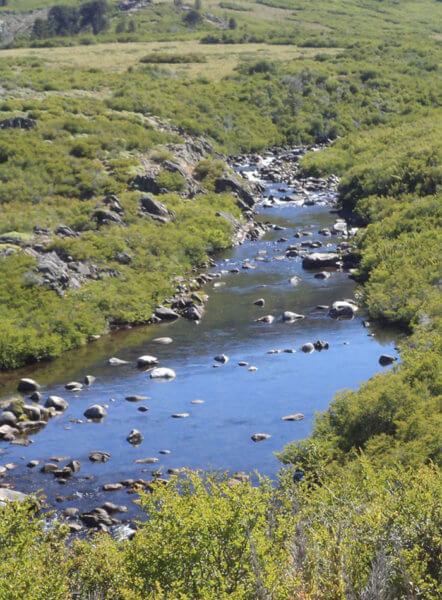
Step 1: in advance of your trip, ask your lodge or guides about the types of water likely to be fished during your specific visit.
Step 2: pack rods and reels accordingly
8 1/2′-9′ 4-weight or 5-weight, moderate action: calm day dry fly rod
9′ 4-weight, fast action: all-purpose dry fly rod
9′ 5-weight, fast action: all-purpose dry fly and nymph rod (most important rod in your bag)
9′ 6-weight, fast action: windy day dry fly rod and every day streamer rod
9′ 7-weight: streamer rod for large rivers, all-purpose lake rod
9′ 8-weight: heavy lake and river rod for large flies and sinking lines, especially for southern Patagonia and Chilean coastal rivers
7 and 8-weights over 9′: swing rods for sea run fish and fishing the “bocas” of large rivers as they exit lakes. The latter is often a seasonal DIY opportunity rather than part of a guided trip.
Reels & Lines
Durable reels are the name of the game. In this sparsely populated region, fly shops are widely spaced and backup equipment is generally not available from your lodge. Out there on the horizon, there is a premium on durable gear. I only pack extra spools when I’m committed to lake fishing, potentially with a variety of sinking lines. Otherwise, it’s one reel per rod. For brand suggestions, see my personal packing list, below.
Let’s talk about lines. The most important thing is to match your lines to your specific fly rods, rather than to the fishing situations you’ve been reading about. A well-paired rod and line will outperform a specialty fly line chosen only for its alleged fishing traits. Make sure to consult Telluride Angler for rod and line pairing suggestions. This is the biggest component of our shop’s equipment recommendation credo.
All things equal, we fish larger flies in windier conditions in Patagonia. Midge fishing is rare. Leaders over 12′ are unusual. Wind is assumed. We fish short, stout leaders compared with elsewhere in the world, so heavy headed lines designed to turn over leaders with command are a good choice. I fish gentle trout lines like the Rio Elite Technical Trout and SA Amplitude Trout Taper only on my G Series medium action dry fly rods. On all others, I prefer a more aggressive head to deliver the goods. A survey of my reels would reveal mostly Rio Elite Gold, SA Amplitude MPX and SA Titan Taper lines. Type III and type IV sink tips are ideal for casual streamer fishing. Rio Outbound Short floaters are terrific for terrestrials on fast action rods. My favorite all-purpose sinking lake lines are the SA Sonar Stillwater clear camo. If fishing larger streamers, a Rio Elite Predator, Outbound F/S or SA Sonar Titan Taper sink tip is the ticket.
Leaders & Tippets
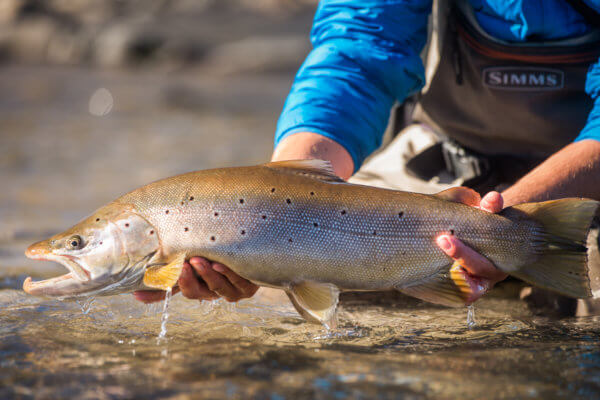 Common nylon and fluoro materials will fish throughout Patagonia. I pack 9′ 1X-4X leaders with tippet spools 2X-6X. The only river on which I regularly fish 6X is the Malleo. My guide friends never fish anything lighter than 5X anywhere in Patagonia. They laugh at my 6X and remind me that a better angler would only need 4X to fool those selective risers. So, leave your 7X at home. When fishing streamers on sinking lines, consider using 1X, 0X or steelhead class tippet materials.
Common nylon and fluoro materials will fish throughout Patagonia. I pack 9′ 1X-4X leaders with tippet spools 2X-6X. The only river on which I regularly fish 6X is the Malleo. My guide friends never fish anything lighter than 5X anywhere in Patagonia. They laugh at my 6X and remind me that a better angler would only need 4X to fool those selective risers. So, leave your 7X at home. When fishing streamers on sinking lines, consider using 1X, 0X or steelhead class tippet materials.
Boots & Waders
Wet wading happens in Patagonia, but not very often. Chilean Patagonia just isn’t a very warm place. Even on the hotter Argentine side, some environmental factor generally makes you wish you were wearing waders. I have wet waded tributary streams in January, as well as portions of high dessert rivers such as the Collón Curá, but this has comprised less than 10% of my fishing down there. Every angler needs to pack waders and boots to Patagonia.
You’ll want breathable, stocking foot waders and a relatively new pair of either felt or rubber sole boots. At this time, felt is still legal in both Argentina and Chile, but border agents may inspect your boots and ask whether you clean them. I love this, because it demonstrates a certain level of river stewardship in the national conscience. Ragged boots may be confiscated, so take a fresh pair on your trip. If you’re fishing in January or February and have room in your bag, throw in a pair of neoprene wet wading socks just in case the opportunity arises.
Gear Bags and Fishing Packs
I recommend three bag/packs for your trip: one for transporting rods and reels, one for fishing and one for the general packing of all your belongings. These are my favorites.
Rods and reels: Fishpond Dakota Case. This is the best $189 you’ll ever spend in our sport, luggage that organizes and protects 8 fly rods and reels. It fits in the overhead compartment and is durable enough to serve as a checked bag if necessary. This is all critical on your Patagonia trip. For some reason, fly rods must be checked on flights from Buenos Aires to the United States. Also, Aerolineas Argentinas now requires fly rods to be checked on flights within Argentina. Be prepared by packing your rods in a real piece of luggage, like the Dakota Case, rather than duct taping them together in their aluminum tubes.
Fishing pack: I’m all about waterproof packs. The simplicity of a 1-zipper pack prevents the accidental loss of key items, such as my eye glasses, sunscreen or a fly box (all of which have slipped out of my vest on past trips). Waterproof is a big advantage, especially when wading deep. Without reservation, I would recommend the Fishpond Thunderhead Submersible Lumbar pack. I personally use the Fishpond Thunderhead Sling, which is great on foot or in the boat and has plenty of room for my rain jacket and a water bottle.
Main luggage piece: The minor luxury of a wheeled duffel is so nice for international travel, especially when you have a significant carry-on piece over one shoulder. I can recommend both the 125L Fishpond Storm Shadow Large Rolling Duffel and Patagonia 100L Black Hole Wheeled Duffel, both high quality wheeled duffels that just make life easier on a big trip.
Nets
Patagonia guides always carry a net. Bring yours only for DIY fishing. Traveling internationally with a net is painful.
Sunglasses
Ideally, one pair of quality sunglasses with copper or brown lenses and one with yellow lenses for late light. In January and February, the evening fishing session often lasts until nearly dark.
Apparel
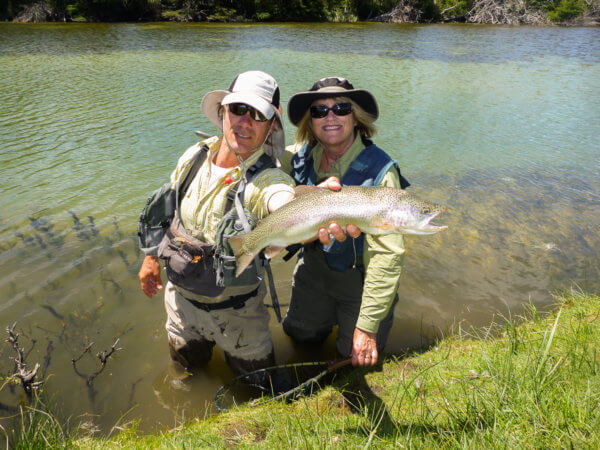 Seasonal apparel choices mirror those of North America. January is the equivalent of July, April is October, etc. In January, high temperatures may range from the 60s to the upper 80s. In April, expect temperatures from the 30s to the upper 50s. April and May are typically rainy. In January, I’ve seen the weather swing from 88 degrees and sunny to 58 degrees and pouring rain for two days, then back into the 80s.
Seasonal apparel choices mirror those of North America. January is the equivalent of July, April is October, etc. In January, high temperatures may range from the 60s to the upper 80s. In April, expect temperatures from the 30s to the upper 50s. April and May are typically rainy. In January, I’ve seen the weather swing from 88 degrees and sunny to 58 degrees and pouring rain for two days, then back into the 80s.
Rain jacket (a nice one)
Light puffy jacket (critical in April/May)
Long sleeve UPF fishing shirts or hoodies
One pair of long fishing pants
Three pairs of wool or poly fishing socks
Light gloves and beanie (April/May)
Brimmed hat
Buff
Comfortable clothes for the lodge
[Read John’s Personal Packing List]
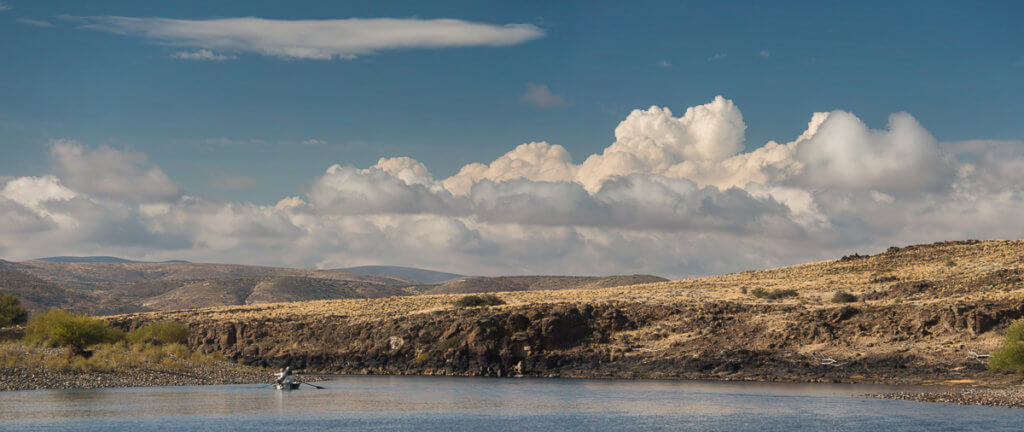
John’s Personal Gear List for Patagonia
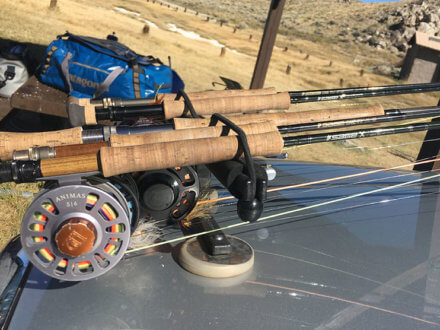 Rods
Rods
G.Loomis Asquith 490-4
Scott GS 885-4
Scott Centric 905-4
Scott Centric 906-4
G.Loomis Asquith 790-4
Reels
Ross San Miguel #2 (original) w/SA Amp Smooth Trout Taper WF4F
Ross Evolution LTX 4|5 w/SA Amp Trout Taper WF5F
Abel SDF 4|5 w/SA Amplitude Infinity WF5F
Galvan Torque #5 w/SA Amplitude Infinity WF6F
Hatch Iconic 5+ w/Rio Elite Predator WF6F/2-3ips
Tibor Everglades w/various sinking lines
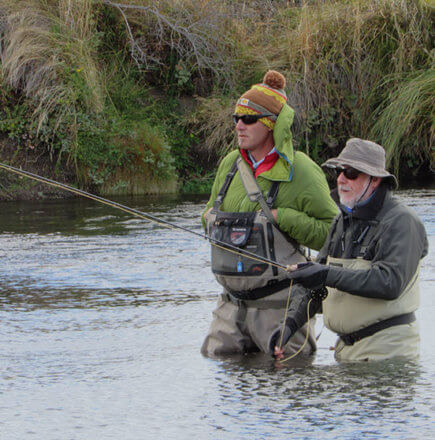
Leaders and Tippet
Rio Nylon Leaders – 9’ 1x, 9’ 2x, 9’ 3X, 9′ 4X
Rio Nylon Tippet – 1 spool each of 2, 3, 4, 5 and 6x
~ Bring extra leaders and tippet to leave with your guides
Waders and Boots
Simms G3 Guide Wader
Simms G3 Guide Boot, Vibram Sole
Simms Guide Guard Sock
Simms Wet Wading Socks
Gear Bag/Fishing Pack
Fishpond Thunderhead Sling
Fishpond Dakota Rod & Reel Case
Patagonia Black Hole Rolling Duffel, 100L
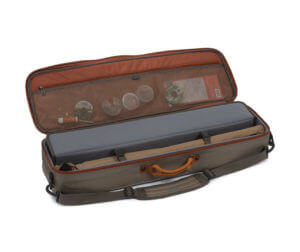
Sunglasses
Costa Fantail, brown lens
Costa Fantail, yellow lens
Apparel & Accessories
Patagonia Swiftcurrent Wading Jacket
Extra Shimizaki Dry Shake and Aquel to leave with the guides
Related Articles
[Centric v. Asquith v. Air 2 v. R8 Core v. NRX+: Selecting a Fast Action Fly Rod]
[Winston Pure vs Sage Trout LL vs Scott G Series: Selecting a Medium Action Fly Rod]
[How to Choose a Fly Rod]
Bonus Material: Fishing with Traful River Outfitters at Quillén Lodge
